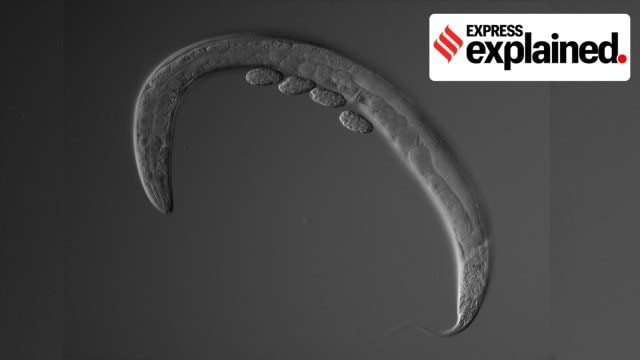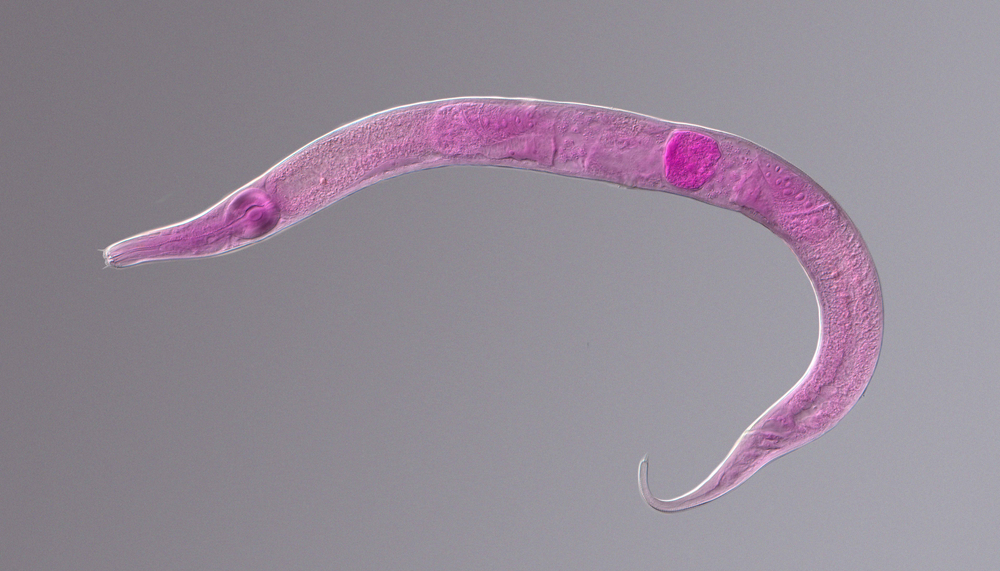Caenorhabditis elegans (C. elegans)

- 22 Oct 2024
In News:
The tiny nematode Caenorhabditis elegans (C. elegans) has played an outsized role in scientific discovery, contributing to four Nobel Prizes over the years.
Key Discoveries from C. elegans Research
- C. elegans and Cellular Processes:
- The worm has helped scientists understand programmed cell death (apoptosis), a vital process in development and disease. This work contributed to the 2002 Nobel Prize in Physiology or Medicine, addressing how cells are instructed to kill themselves and how this process goes awry in conditions like AIDS, strokes, and degenerative diseases.
- Gene Silencing and RNA Interference:
- In 2006, a Nobel Prize was awarded for the discovery of gene silencing via RNA interference (RNAi), a process first explored using C. elegans. This discovery led to the development of a new class of RNA-based drugs.
- Cellular Imaging Techniques:
- In 2008, C. elegans contributed to breakthroughs in cellular imaging, as its use helped invent cellular “lanterns” that allowed scientists to visualize the inner workings of cells, earning a Chemistry Nobel.
- Gary Ruvkun’s 2024 Nobel:
- Gary Ruvkun’s Nobel Prize in Physiology or Medicine in 2024 was the fourth in a series of Nobel recognitions stemming from C. elegans research, reinforcing its role in fundamental biological discoveries.
Key Facts About Caenorhabditis elegans (C. elegans):
- Size: 1 millimeter long.
- Life Cycle: Completes in 3-5 days.
- Cell Count: 959 cells.
- Genome: First multicellular organism to have its full genome sequenced in 1998.
- Sexual Reproduction: Hermaphroditic (self-fertilizing) and male.
- Scientific Role: Used to study genetics, developmental biology, neuroscience, and cell biology.
- Nobel Prize Contributions: Four Nobel Prizes, including those in Physiology, Medicine, and Chemistry, for advancements in cell death, gene silencing, and imaging.
Caenorhabditis Elegans

- 13 May 2024
Why is it in the News?
Researchers found that after C. elegans worms ate a disease-causing bacteria, its children knew from birth to avoid making the same mistake.
What is Caenorhabditis Elegans?
- Caenorhabditis elegans is a small, free-living roundworm (nematode) that is widely used as a model organism in various fields of biological research, including genetics, developmental biology, neuroscience, and ageing.
- It was initially discovered in the soil of a nematode-infested plant in the city of Bristol, England, in the early 20th century.
C. elegans has several characteristics that make it an ideal model organism:
- Simple anatomy: The adult hermaphrodite worm consists of precisely 959 cells, allowing for a detailed understanding of its cellular anatomy.
- Rapid life cycle: The worm's life cycle, from fertilized egg to mature adult, takes only about 3 days at 20°C.
- Transparent body: The transparency of its body enables researchers to observe cellular structures and processes directly under a microscope.
- Ease of genetic manipulation: C. elegans is highly responsive to genetic manipulation techniques, facilitating the study of gene function and the effects of mutations.
- Research on C. elegans has led to groundbreaking discoveries, including insights into the molecular basis of cell death, the regulation of gene expression, and the neural basis of behaviour.
- These findings have provided valuable knowledge that can be applied to understanding the biology of more complex organisms, including humans.
What are Nematodes?
- Nematodes are long, thin round worms, so tiny that they can usually only be seen under the microscope.
- Nematodes are incredibly abundant organisms found in various environments worldwide.
- They can be parasites of animals and plants or exist as free-living organisms in soil, freshwater, marine habitats, and even unconventional places like vinegar and beer malts.
- These bilaterally symmetrical creatures are elongated with tapered ends and may possess a pseudocoel, a fluid-filled body cavity.
- Nematodes are ubiquitous, inhabiting diverse ecosystems ranging from deserts and swamps to oceans and even Antarctica.
- In animals, they commonly parasitize organs such as the alimentary, circulatory, and respiratory systems.
